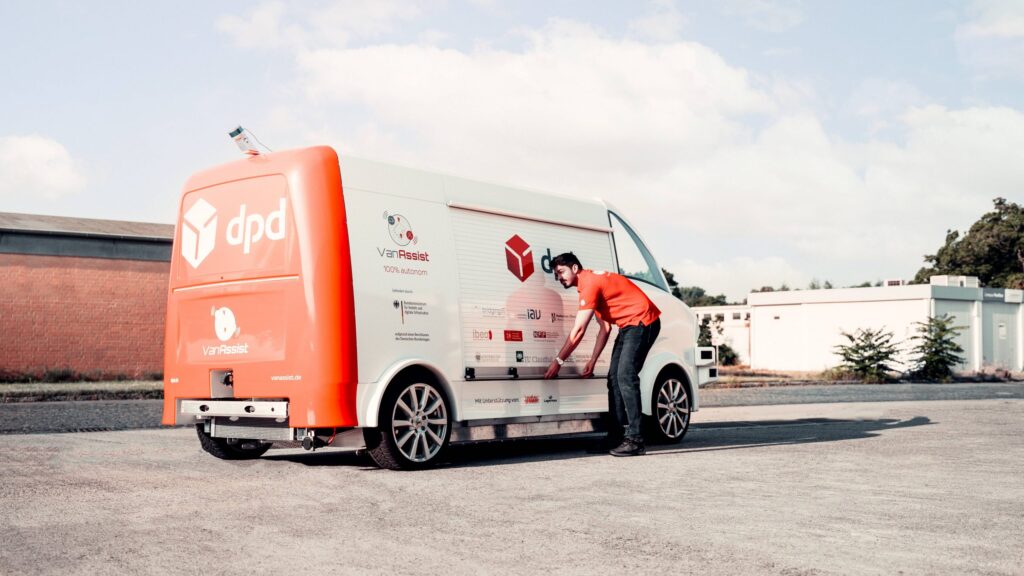DPD Germany has begun testing its autonomous electric delivery vehicle, VanAssist, at the Technical University of Braunschweig in Germany, in anticipation of growing parcel demand throughout the country. However, DPD has said that navigation issues still need to be addressed to put the vehicle on the road.
The VanAssist test vehicle operates in ‘rendezvous mode’, meaning that the vehicle can cover the distance from the depot to the delivery area autonomously. The delivery driver only joins the vehicle at a predefined meeting point. Then, while the driver delivers the parcels, the vehicle automatically drives to the next predefined stopping point. In this way the van is always waiting for the driver at the exact spot where they need the next parcel or to be picked up and taken to the next address.
The vehicle’s intelligent navigation software can independently navigate the vehicle to stopping points and react in real time to changes in the traffic situation. The navigation can also quickly guide the driver to the delivery point inside the building in large office blocks or industrial complexes. If the planned stopping point is not available, the vehicle informs the delivery driver via a specially programmed smartphone app about the alternative point where it will be waiting. The app’s features also make it possible to flexibly adjust delivery routes as required.
However, the test vehicle is yet to be used on the road in a practical trial. To fully integrate the vehicle into cities, a few roadblocks remain. Gerd Seber, group manager of city logistics and sustainability at DPD Germany, said, “We need standardized intelligent traffic lights and traffic signs. We also need loading zones that can be reserved specifically for delivery vehicles to which our vans can navigate.”
Seber added, “Our tests have shown that we need a control center that can intervene whenever something unforeseen happens on the tour that prevents the vehicle deciding on its own what to do. This could be an obscured sensor or a blocked road, for example. We have realized that we need to fundamentally rethink our route planning. In the future we will not just need to know the address to which we deliver a parcel, but also the nearby stopping points for this parcel, which we can identify and store in the system”.
The project aims to conserve personnel resources, relieve traffic density in conurbations and promote a reduction in emissions while meeting the expected increase of demand for parcel delivery in Germany, which is predicted to have 5.7 billion parcels transported annually by 2025, which would mark a 40% increase on 2021 figures.


